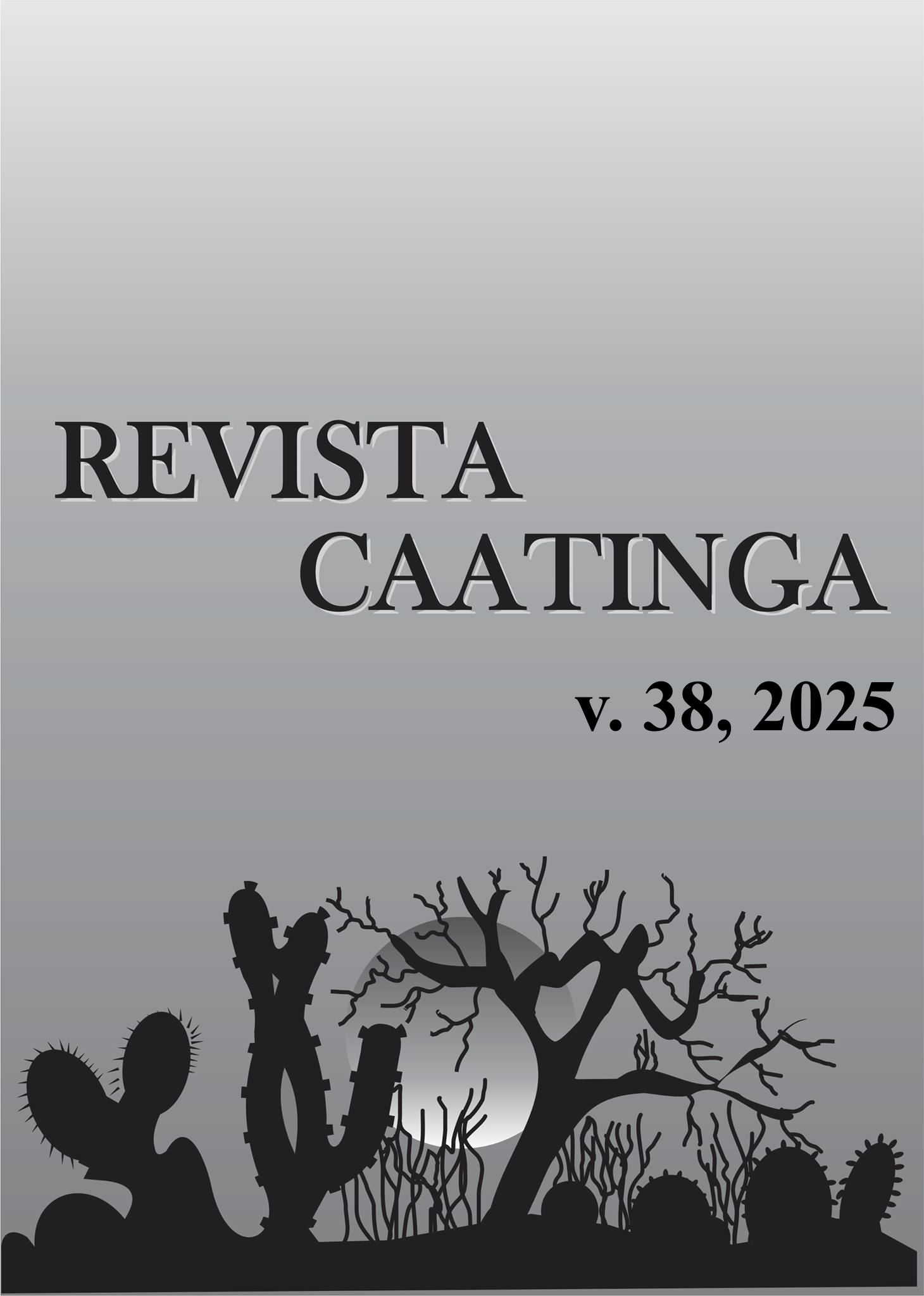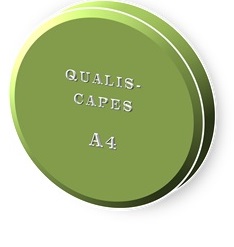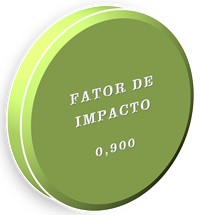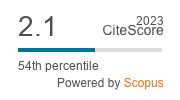In vitro compatibility of fungicides with Metarhizium rileyi in soybean disease management
DOI:
https://doi.org/10.1590/1983-21252025v3812752rcKeywords:
Glycine max. Lepidoptera. Biological control. Entomopathogenic fungi. Selectivity.Abstract
Compatibility between chemical fungicides and biological insecticides is essential for maintaining plant health and preserving entomopathogenic fungi that induce epizootics in arthropod pests in soybean crops. The objective of this study was to evaluate the effects of the fungicides Fox Xpro®, Sphere Max®, Orkestra®, Elatus®, Vessarya®, and the adjuvant Aureo® on the in vitro development of the entomopathogenic fungus Metarhizium rileyi (strain UFMS 03). The effects of these products on vegetative growth (cm), conidial production, and germination (%) of M. rileyi were assessed. The obtained data were used to calculate the compatibility factor based on the biological index. The fungicide Elatus® and the adjuvant Aureo® were compatible with M. rileyi, showing no adverse effects on its vegetative growth. The fungicide Orkestra® was moderately toxic to M. rileyi, negatively affecting its vegetative growth and sporulation. The fungicides Fox Xpro®, Sphere Max®, and Vessarya® were toxic to M. rileyi, reducing its vegetative growth and sporulation. Although all products reduced M. rileyi sporulation, Elatus® and Aureo® were compatible with M. rileyi and can be integrated into disease management strategies aimed at conserving this biological control agent.
Downloads
References
ANDRADE, E. P.; RANGEL D. E. N. Desenvolvimento do fungo entomopatogênico Metarhizium rileyi como agente microbiano para o manejo das principais espécies de lepidópteros nas culturas de soja e algodão: uma revisão. Brazilian Journal of Development, 7: 49283-49288, 2021.
BAMISILE, B. S. et al. Model application of entomopathogenic fungi as alternatives to chemical pesticides: Prospects, challenges, and insights for next-generation sustainable agriculture. Frontiers in Plant Science, 12: 1-21, 2021.
AGROFIT - Sistema de Agrotóxicos Fitossanitários, do Ministério da Agricultura, Pecuária e Abastecimento. Consulta Aberta. Available at: <http://agrofit.agricultura.gov.br/agrofit_cons/principal_agrofit_cons>. Access on: May 15, 2024.
CARVALHO, G. A. et al. Physiological and ecological selectivity of pesticides for natural enemies of insects. In: SOUZA, B.; MARUCCI, R. C.; VÁZQUEZ, L. L. (Eds.). Natural enemies of insect pests in neotropical agroecosystems. Cham, Switzerland: Springer, 2019. cap.37, p. 469-478.
CHANDER, S. et al. Prospects for durable resistance against an old soybean enemy: a four-decade journey from Rpp1 (Resistance to Phakopsora pachyrhizi) to Rpp7. Agronomy, 9: 1-23, 2019.
CONAB - Companhia Nacional de Abastecimento. Acompanhamento da safra 2023/2024 - 7º Levantamento. Available at: < https://www.conab.gov.br/info-agro/safras/graos/boletim-da-safra-de-graos>. Access on: May 15, 2024.
DAMIN, S. et al. Ação de fungicidas sobre o crescimento do fungo entomopatogênico Metarhizium sp. Revista Acadêmica: Ciências Agrárias e Ambientais, 9: 41-49, 2011.
HAWKINS, N. J. et al. The evolutionary origins of pesticide resistance. Biological Reviews, 94: 135-155, 2019.
KHUN, K. K. et al. Compatibility of Metarhizium anisopliae and Beauveria bassiana with insecticides and fungicides used in macadamia production in Australia. Pest Management Science, 77: 709-718, 2021.
LOPES, R. B. et al. Efficacy of an oil-based formulation combining Metarhizium rileyi and nucleopolyhedroviruses against lepidopteran pests of soybean. Journal of Applied Entomology, 144: 678-689, 2020.
LOPES, R. B. et al. Potential impact of chemical fungicides on the efficacy of Metarhizium rileyi and the occurrence of Pandora gammae on Caterpillars in Soybean Crops. Microbial Ecology, 86: 647-657, 2023.
LOUREIRO, E. S. et al. Adjuvant compatibility on Metarhizium anisopliae. Contribuciones a Las Ciencias Sociales, 16: 15306-15316, 2023.
LOUREIRO, E. S. et al. Virulence of entomopathogenic fungi in larvae of Lepidoptera: Noctuidae. Revista Caatinga, 37: 1-7, 2024.
MANTZOUKAS, S. et al. Entomopathogenic fungi: interactions and applications. Encyclopedia, 2: 646-656, 2022.
MONTECALVO, M. P.; NAVASERO, M. M. Occurrence and characterization of Metarhizium rileyi (Farl.) Kepler, S.A. Rehner and Humber from invasive armyworm species in the philippines with potential as a biopesticide. Journal Journal of the International Society for Southeast Asian Agricultural Sciences, 30: 80-91, 2024.
OLIVEIRA, R. P. et al. Compatibilidade de inseticidas utilizados no controle da mosca branca em soja com Beauveria bassiana. Revista de Agricultura Neotropical, 5: 88-93, 2018.
ONOFRE, S. B. et al. Fungicide toxicity against the growth of lineages of the fungus Metarhizium anisopliae var. anisopliae (Mestch.) Sorokin. Journal of Yeast and Fungal Research, 2: 88-92, 2011.
PICOLI, M. C. et al. Impacts of public and private sector policies on soybean and pasture expansion in Mato Grosso - Brazil from 2001 to 2017. Land, 9: 1-15, 2020.
ROSSI-ZALAF, L. S. et al. Interação de micro-organismos com outros agentes de controle de pragas e doenças. In: ALVES, S. B.; LOPES, R. B. (Eds.). Controle microbiano de pragas na América Latina: avanços e desafios. Piracicaba, SP: FEALQ, 2008. v. 1, cap. 11, p. 279-302.
SILVA, R. Z.; NEVES, P. M. O. J.; SANTORO, P. H. Técnicas e parâmetros utilizados nos estudos de compatibilidade entre fungos entomopatogênicos e produtos fitossanitários. Semina: Ciências Agrárias, 26: 305-312, 2005.
SKENDŽIĆ, S. et al. The impact of climate change on agricultural insect pests. Insects, 12: 1-31, 2021.
SOUZA, T. D. et al. Genetic diversity of the entomopathogenic fungus Metarhizium rileyi based on de novo microsatellite markers. Journal of Invertebrate Pathology, 204: 1-10, 2024.
ZAMBOLIM, L. et al. Integrated management of Asian soybean rust. European Journal of Applied Sciences, 10: 602-633, 2022.
ZAPPELINI, L. O.; ALMEIDA J. E. M.; GASSEN M. H. Compatibilidade de fungos entomopatogênicos com emulsificantes para óleo vegetal e pó molhável. Arquivos do Instituto Biológico, 72: 1-63, 2005.
Downloads
Published
Issue
Section
License
Os Autores que publicam na Revista Caatinga concordam com os seguintes termos:
a) Os Autores mantêm os direitos autorais e concedem à revista o direito de primeira publicação, com o trabalho simultaneamente licenciado sob a Licença Creative Commons do tipo atribuição CC-BY, para todo o conteúdo do periódico, exceto onde estiver identificado, que permite o compartilhamento do trabalho com reconhecimento da autoria e publicação inicial nesta revista, sem fins comerciais.
b) Os Autores têm autorização para distribuição não-exclusiva da versão do trabalho publicada nesta revista (ex.: publicar em repositório institucional ou como capítulo de livro), com reconhecimento de autoria e publicação inicial nesta revista.
c) Os Autores têm permissão e são estimulados a publicar e distribuir seu trabalho online (ex.: em repositórios institucionais ou na sua página pessoal) a qualquer ponto antes ou durante o processo editorial, já que isso pode gerar alterações produtivas, bem como aumentar o impacto e a citação do trabalho publicado (Veja O Efeito do Acesso Livre).







